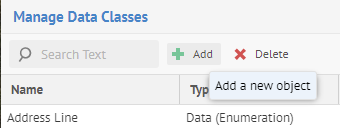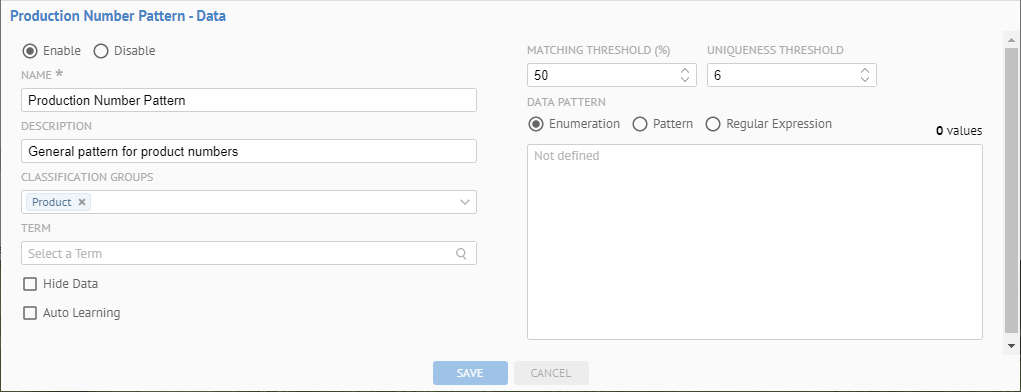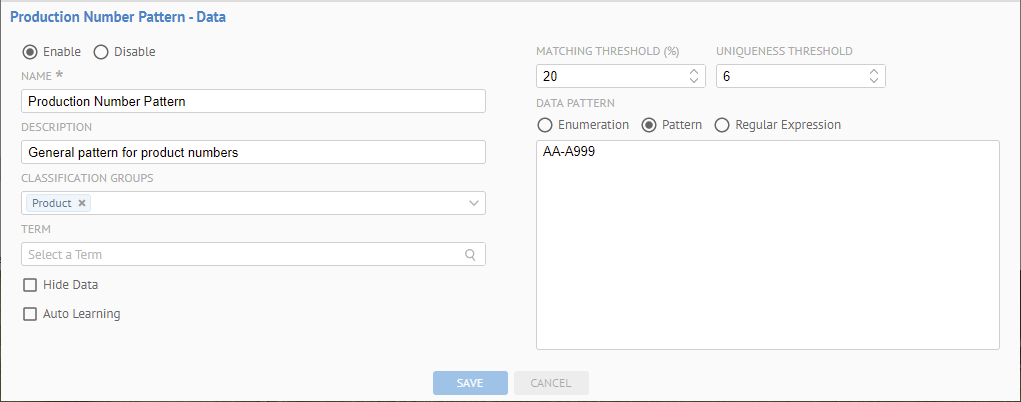
Depending upon the Type of data class one is working with:
the options will be different. However, for all types, there are common actions and properties.
Steps
2. If the data class does not yet exist, add the data class.
3. Select the status of the data class:
o Enable: This data class will be included in the next data classification operation.
o Disable: This data class will not be included in the next data classification operation.
Even though a data class is disabled, it may still be manually assigned and unassigned from an imported object.
4. Edit the following text fields:
o NAME: Name of the data class
o DESCRIPTION: Primary text description of the data class
5. Pick one or more data CLASSIFICATION GROUPS this data class is to be a member of.
You may classify the data of a model by group.
6. Pick a TERM from a glossary this data class will be associated with. This term will be used as part of the semantic lineage just as one that is semantically mapped or classified.
7. Select DEFAULT SENSITIVITY: specifies the Sensitivity Label that will be assigned to and data element that classified by this data class. Sensitivity Label assignment can control the hiding of data profiling and sampling information on the object page even for data viewers.
When a harvested object has data profiling and sampling information on its details its page shows them, by default, if one has the Data Viewer capability object role assignment. However, when a harvested object has a proposed or assigned data class resulting in a Sensitivity Label that has the HIDE DATA flag, then its data profiling and sampling information is not shown on the object page for data viewers.
When the Data Hide attribute of the harvested object is set to True it ignores the Data Hide flag of its data classes.
8. Select Auto Learning: to allow the data class to be auto-populated with a pattern based upon existing imported objects.
9. Click SAVE.
The options will be different depending upon what type of data class you are editing. However, for all types, there are common actions and properties.
o Compound
Example
Sign in as Administrator and go to MANAGE > Data Classes.

Enter “Product” in the  Search
box.
Search
box.
Click the line for the Product Number Pattern class

Enter the pattern “AA-A999”in the DATA PATTERN box. Select “20”in the MATCHING THREASHOLD (%) box. Click SAVE.
